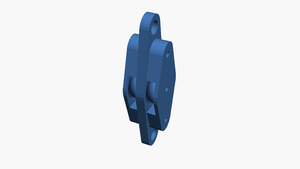Cords: Difference between revisions
No edit summary |
No edit summary |
||
| (3 intermediate revisions by the same user not shown) | |||
| Line 22: | Line 22: | ||
=Challenges= | =Challenges= | ||
The use of cords in Replimat presents several challenges, such as the need to select the appropriate type of cord for a given application, and the need to learn and use different knots for securing and joining cords. To address these challenges, Replimat recommends the use of 550 paracord, as well as a simplified selection of knots for holding, sliding, and other purposes. | |||
=Approaches= | =Approaches= | ||
| Line 33: | Line 33: | ||
=Development targets= | =Development targets= | ||
Replimat also encourages the development of cord looms, which are tools used to create cords by interlacing threads. Cord looms can be used to create a wide range of cords, from simple ropes to complex braids and patterns. The use of cord looms allows for greater creativity and flexibility in cord making, and can also improve the speed and efficiency of the process. | |||
<youtube>z9tgjUBpmLA</youtube> | <youtube>z9tgjUBpmLA</youtube> | ||
<youtube>kHDC70iC5jg</youtube> | |||
=References= | =References= | ||
| Line 42: | Line 46: | ||
* [https://hackaday.io/project/181163-3d-print-high-strength-pulley-systemblocktackle 3D printed block and tackle] | * [https://hackaday.io/project/181163-3d-print-high-strength-pulley-systemblocktackle 3D printed block and tackle] | ||
* [[File:NASA Technical Standard 8739.4 w- change 6.pdf|thumb]] | * [[File:NASA Technical Standard 8739.4 w- change 6.pdf|thumb]] | ||
* [http://www.cs.cmu.edu/~kmcrane/Projects/Other/YarnCurve.pdf PDF: A Simple Parametric Model of Plain-Knit Yarns] | |||
Latest revision as of 07:30, 31 March 2023
Introduction
String is a long flexible structure made from fibers twisted together into a single strand, or from multiple such strands which are in turn twisted together. String is used to tie, bind, or hang other objects. It is also used as a material to make things, such as textiles, and in arts and crafts. String is a simple tool, and its use by humans is known to have been developed tens of thousands of years ago. In Mesoamerica, for example, string was invented some 20,000 to 30,000 years ago, and was made by twisting plant fibers together. String may also be a component in other tools, and in devices as diverse as weapons, musical instruments, and toys.
Challenges
The use of cords in Replimat presents several challenges, such as the need to select the appropriate type of cord for a given application, and the need to learn and use different knots for securing and joining cords. To address these challenges, Replimat recommends the use of 550 paracord, as well as a simplified selection of knots for holding, sliding, and other purposes.
Approaches
- 550 paracord
- Titan Survivorcord
- Simplified selection of knots - holding, sliding,
Interoperability
Development targets
Replimat also encourages the development of cord looms, which are tools used to create cords by interlacing threads. Cord looms can be used to create a wide range of cords, from simple ropes to complex braids and patterns. The use of cord looms allows for greater creativity and flexibility in cord making, and can also improve the speed and efficiency of the process.
